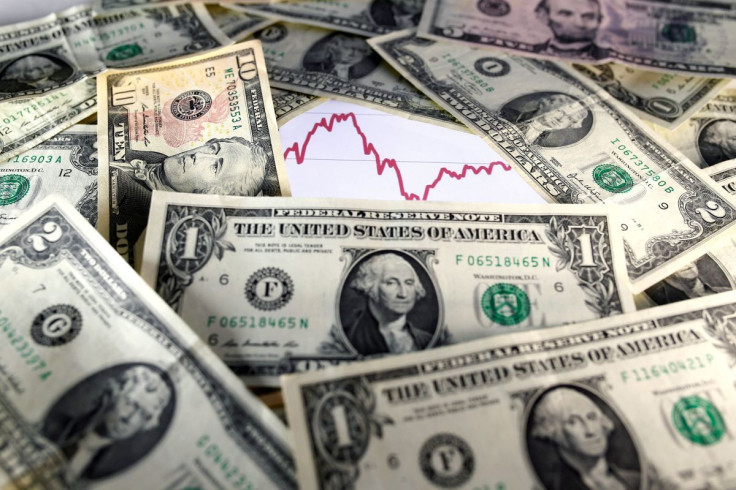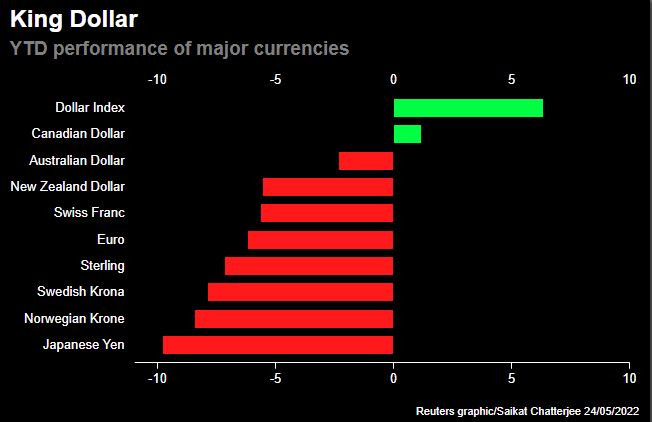Dollar Heads For Weekly Drop As Traders Pare Fed Rate Hike Views

The dollar edged lower and was on track for its second-straight weekly decline as traders pared expectations for U.S. Federal Reserve interest rate hikes and as improving inflation and consumer spending data eased recession fears.
The dollar index, which measures the safe-haven currency against a basket of six other major currencies, fell as low as 101.43, its weakest since April 25. On a weekly basis, it was down 1.3%, following a 1.45% decline the previous week. At 10:45 a.m. Eastern time (1445 GMT), the dollar was down 0.147% at 101.57.
The greenback hit a nearly two-decade peak above 105 earlier this month but has declined along with outlooks for the magnitude of likely Fed rate hikes this year, which have been fueled in part by fears over runaway inflation.
"The dollar is losing altitude as the view of the Fed pausing rate hikes in the fall gains traction," said Joe Manimbo, senior market analyst at Western Union Business Solutions.
Minutes from the Fed's May meeting this week showed most participants believed 50 basis-point hikes would be appropriate at the June and July policy meetings, but many thought big, early hikes would allow room to pause later in the year to assess whether tighter policy is helping to tame inflation.
Although inflation continued to increase in April, it rose less than in recent months, data showed on Friday. The personal consumption expenditures (PCE) price index rose 0.2%, the smallest gain since November 2020, after shooting up 0.9% in March. For the 12 months through April, the PCE price index advanced 6.3% after jumping 6.6% in March.
Benchmark U.S. Treasury yields were lower on Friday, but briefly bounced off session lows after the April inflation figures, which boosted hopes that the worst of soaring price pressures has passed.
A separate report showed U.S. consumer spending rose more than expected last month as households boosted purchases of goods and services.
Next week's key U.S. report will be the nonfarm payrolls numbers for May at the end of the week.
"The jobs data will shed some light on the scope for tightening from the third-quarter forward," said Manimbo.
The euro has been the chief beneficiary of the dollar's decline, but that momentum has also stalled as investors believe much of the expected rate hikes from the European Central Bank have been priced into current levels.
The single currency was up 0.06% at $1.07395, having earlier risen to its highest levels in a month. Sterling was 0.31% higher at $1.2646.
The risk-sensitive Australian dollar rallied 0.89% to $0.7163, while the New Zealand dollar jumped 1.08% to $0.6548.
Better risk sentiment did not help bitcoin, however, which was 0.64% lower at $28,997, continuing this week's gradual decline from the psychologically important $30,000 level.
Graphic: King Dollar:

© Copyright Thomson Reuters 2024. All rights reserved.







